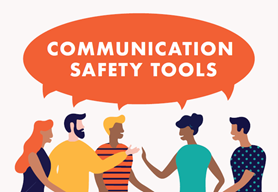By Chandra Farrer
Find the Q-Tip below! There is a Q-Tip hidden in this article. Find it by reading the article and clicking on the link. Once you find it, the Q-Tip will automatically download so you can save it to your collection. Everyone who collects all of the Q-Tips will have the chance to win great prizes.
*You must be logged into VPN to click the hyperlinks.
Women’s College Hospital is implementing three communication safety tools applicable to the ambulatory care environment in both clinical and non-clinical work situations:
- “I have a safety concern”
- SBAR
- Teach Back


This week, we conclude our three part exploration of effective communication and its role in patient safety and safety culture by taking a look at Communication Safety Tool #3: Teach Back.
Do you recall the game “broken telephone” from your childhood? Imagine if each of the players had to repeat back the message to the playmate who said it for confirmation before passing it along. Teach Back is a means of ensuring what was said is what was understood by the recipient. It’s a method of closed loop communication. Teach Back is pivotal in ambulatory care where patients and their care partners are the implementers of their care plan.
Teach Back is recommended for patient education to enhance health literacy. It also has a role in closed loop communication between providers. Teach Back can be used when giving instructions or anytime retention is vital.
WCH Experience Advisors were given the opportunity to learn about Teach Back and shape how staff are trained in its use. “Teach Back is a valuable tool for patients and their care partners” says Kate Mlodzik, WCH Experience Advisor since 2018, “When paired with visual materials such as handouts and photos, it helps to solidify patients’ understanding of medical instructions and ensures that they are active participants in their care.” Click on this week’s Q-Tip for tips on effective use of Teach Back.
More Teach Back Tips:
- Create a safe environment to ensure the recipient is comfortable enough to ask questions or request clarifications – don’t make it feel like a test.
- Use translation services to support effective communication
- Introduce Teach Back using a non-threatening opening phrase, such as “We’ve covered a lot today and I want to ensure I have been clear. Can you review…?”
- Don’t wait until the end of the encounter to use Teach Back. Break information into smaller pieces and use Teach Back throughout.
- When appropriate, use the “show me” method where the individual is asked to demonstrate how they will perform a task or follow instructions.
To learn more and see our Teach Back One Pager that includes graphic illustrations of this tool in action.